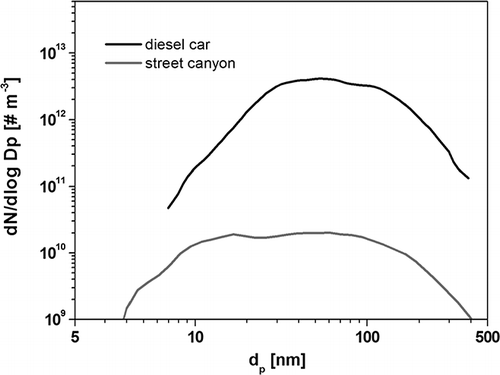Figures & data
Table 1. Boundary conditions utilized within all experiments
Table 2. Boundary conditions for the three experiments
Table 3. Simulated number of nucleation particles in a box sized 2 × 2 × 10 m behind the exhaust out
Figure 1. Cross section (extent 22.5 m in length) for simulated nucleation-mode concentration (in #m−3) in the exhaust pipe plane for the simulation with the reduced particle flux (Exp-1; velocity = 148 km/hr, 4000 rpm). Different colors represent particle number concentration ranges (i.e., red colors represent higher values, and blue colors represent lower values). The length of the car is 4.28 m, the height is 1.51 m, and the extent of the represented plume is ∼15 m.
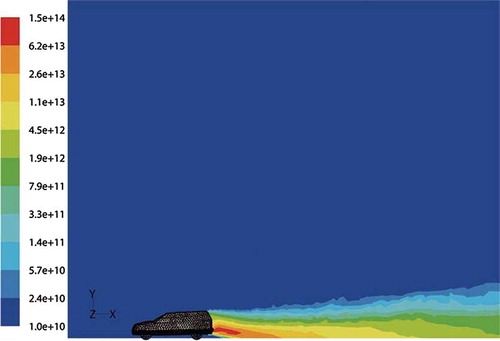
Figure 2. Cross section (extent 3.1 × 2.4 m) for the simulated nucleation mode d gn (in m) in the exhaust pipe plane (Exp-2; velocity = 148 km/hr, 4000 rpm). Red colors represent higher values (i.e., a d gn, of up to 15 nm, blue colors represent lower values [down to 1 nm]). The extent of the plume is ∼2.5 m identical with .
![Figure 2. Cross section (extent 3.1 × 2.4 m) for the simulated nucleation mode d gn (in m) in the exhaust pipe plane (Exp-2; velocity = 148 km/hr, 4000 rpm). Red colors represent higher values (i.e., a d gn, of up to 15 nm, blue colors represent lower values [down to 1 nm]). The extent of the plume is ∼2.5 m identical with Figure 2.](/cms/asset/a7b4405d-deb9-4c7e-983d-7fad2ec445c2/uawm_a_10412107_o_f0002g.jpg)
Figure 3. Cross section (extent 3.1 × 2.4 m) for simulated velocity vectors (in m/sec) in the exhaust pipe plane (Ctrl, Exp-1, Exp-2; 148 km/hr, 4000 rpm) relative to car speed. The length of the car is4.28 m, the height is 1.51 m, and the extent of the plume is ∼2.5 m. The different colors indicate different ranges of the velocity magnitude (in m/sec).
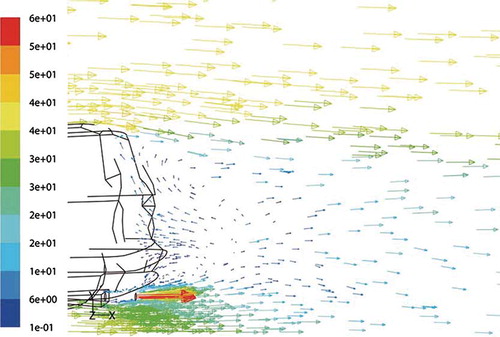
Table 4. HC EFs measured on a chassis dynamometer for a Euro 3 1.9-L diesel car (different from the test car) at constant speed using different gear settings in mg km−1
Table 5. HC EFs measured on a chassis dynamometer for three different Euro 3/4 diesel engines at constant speed using different gear settings in mg km−1 and during acceleration (i.e., high engine load)
Figure 4. Measured size distributions at 45- and 90-cm distance behind the exhaust pipe exit for three different steady-state car operating conditionsCitation13 of (a) velocity = 105 km hr−1 and rpm = 4000 min−1, (b) velocity = 150 km hr−1 and rpm = 3200 min−1, and (c) velocity = 150 km hr−1 and rpm = 4000 min−1.
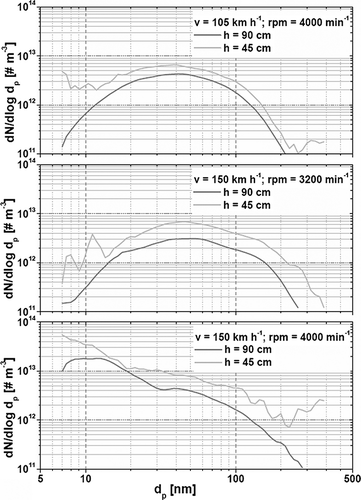
Figure 5. Schematic interpretation based on measurements and results from coupled CFD-aerosol model simulations to summarize the main findings and interaction of processes for in-plume particle nucleation and growth to detectable size ranges. “Nuc rate” denotes the nucleation rate, and “prec” denotes low- and semi-volatile precursor species. The circles symbolize different effects in different “regions” dependent on the nucleation rate and the precursor flux related to dilution. In gray color, an “external” formation path outside of the plume is indicated. Precursor species originating from other sources or from the impact of atmospheric chemistry may convert these 2- to 5-nm-sized nanoparticles into size ranges that may be detectable at curbsides.
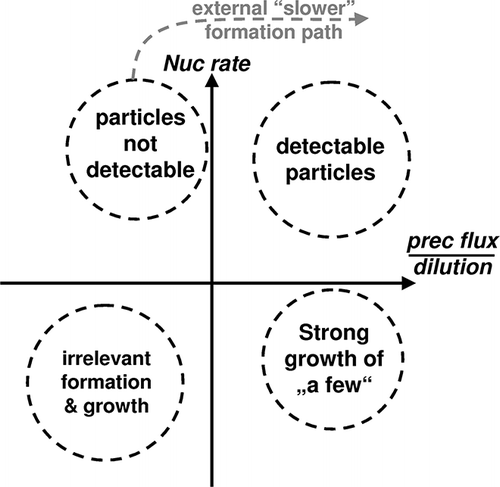
Figure 6. Median number size distributions from urban traffic measurements within the plume of the diesel car and at the Eisenbahnstrabe measurement siteCitation45 in Leipzig on March 31, 2006.
